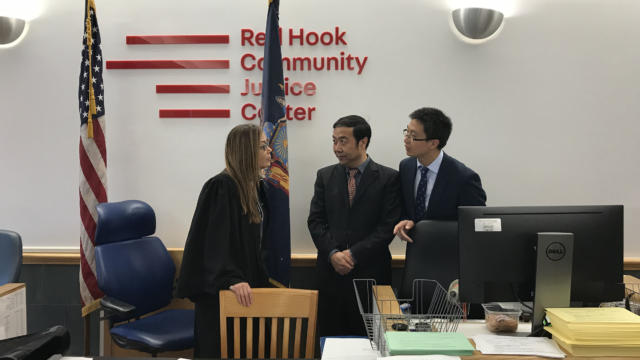The U.S. and China are highlighting their efforts to fight the opioid epidemic together, as they mark the International Day Against Drug Abuse and Illicit Trafficking.
“Cooperation on combatting the flow of illicit opioids is one of the true bright spots in the U.S.-China relationship,” said Terry Branstad, the U.S. Ambassador to China. That cooperation has meant an effort to reduce demand in the United States and an effort to reduce production in China.
The U.S. has stepped up enforcement actions against Chinese producers of fentanyl, indicting two Chinese defendants for using the Internet to sell illicit fentanyl last October and ten others for selling large quantities of the drug to Americans.
“We are working with the Chinese government to stem the flow of illegal fentanyl and fentanyl analogues,” said Mary Daly, Opioid Coordinator for the U.S. Department of Justice, at a conference in Albuquerque, New Mexico, Tuesday.
Branstad said Washington welcomes Beijing’s new procedure for designating illicit drugs which allows “China to consider harm to the public in countries other than China when evaluating whether a substance should be deemed illicit.”
But China’s top drug prevention official underscores the U.S. must do more to cap the demand for highly addictive opioids.
“I believe that to resolve this the more important issue is for the United States to strive to reduce and suppress the huge demand and drug consumption markets for opioids,” said Liu Yuejin, deputy head of China’s National Narcotics Commission, Monday.
DRUG USE, A SHARED PROBLEM
The U.S. Centers for Disease Control and Prevention says the death rate from synthetic opioids other than methadone, which includes drugs such as tramadol and fentanyl, doubled between 2015 and 2016 – the latest figures show.
And according to a 2017 report by China’s National Narcotics Control Commission quoted by the Global Times, there were about 2.55 million drug addicts in China, an increase of nearly two percent from 2016.

A six member study team from the Chinese Ministry of Public Security and the National Narcotics Commission spent a week in the United States, touring locations in Washington D.C. and New York City where experts fight substance abuse.
While Beijing and Washington have experienced increased tension on the trade front, both countries are working more closely to quash demand for the highly addictive substances.
In May, for the first time, a six member study team from the Chinese Ministry of Public Security and the National Narcotics Commission spent a week in the United States, touring locations in Washington D.C. and New York City where experts fight substance abuse. The Chinese embassy declined to comment on the visit.
“When you have a drug use crisis, you have to meet with partners and try to advance the issue as quickly as possible,” said Brian Morales, Director of the Global Drug Demand Reduction Division at the U.S. State Department.
“We share common issues with regard to treatment, how we implement treatment programs, how we design activities to look at the science of addiction,” said Morales in a telephone interview with CGTN. “In that sense, I think we’re in the same boat.”
China has already pledged to contribute to a global database of “cutting agents,” substances – often incredibly toxic – which are mixed in with the drugs along the production route, according to Morales.
“By the time the drugs get into the U.S., we have eight, nine, ten different cutting agents mixed into it, along the whole trafficking route. And so you have a very dangerous cocktail,” which can cause death, he said.
Morales says Beijing has also tested out international clinical standards for drug treatment and is sharing the experience with other countries through a United Nations working group. He says China was one of only “five or six” countries to volunteer.
The next step in the exchange of information on drug treatment and prevention is to schedule a reciprocal visit of American drug treatment professionals to Beijing.
“This is not a political issue. It’s not a controversial issue,” said Morales. “It’s an issue that affects public health and public security.”
 CGTN America
CGTN America
 Meetings taking place at Red Hook Community Justice Center. (PHOTO: Jessica Stone)
Meetings taking place at Red Hook Community Justice Center. (PHOTO: Jessica Stone)
